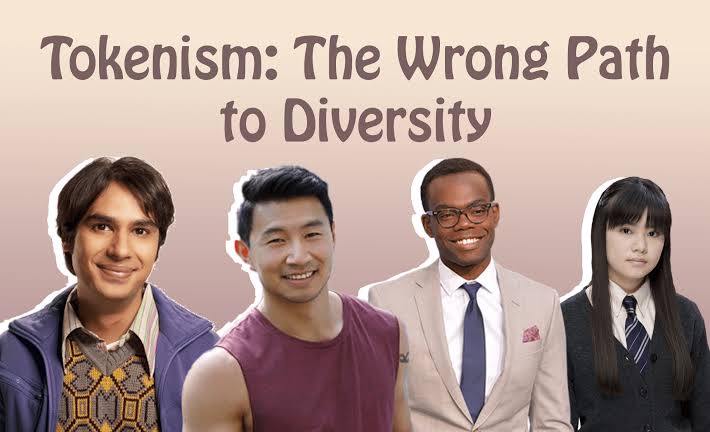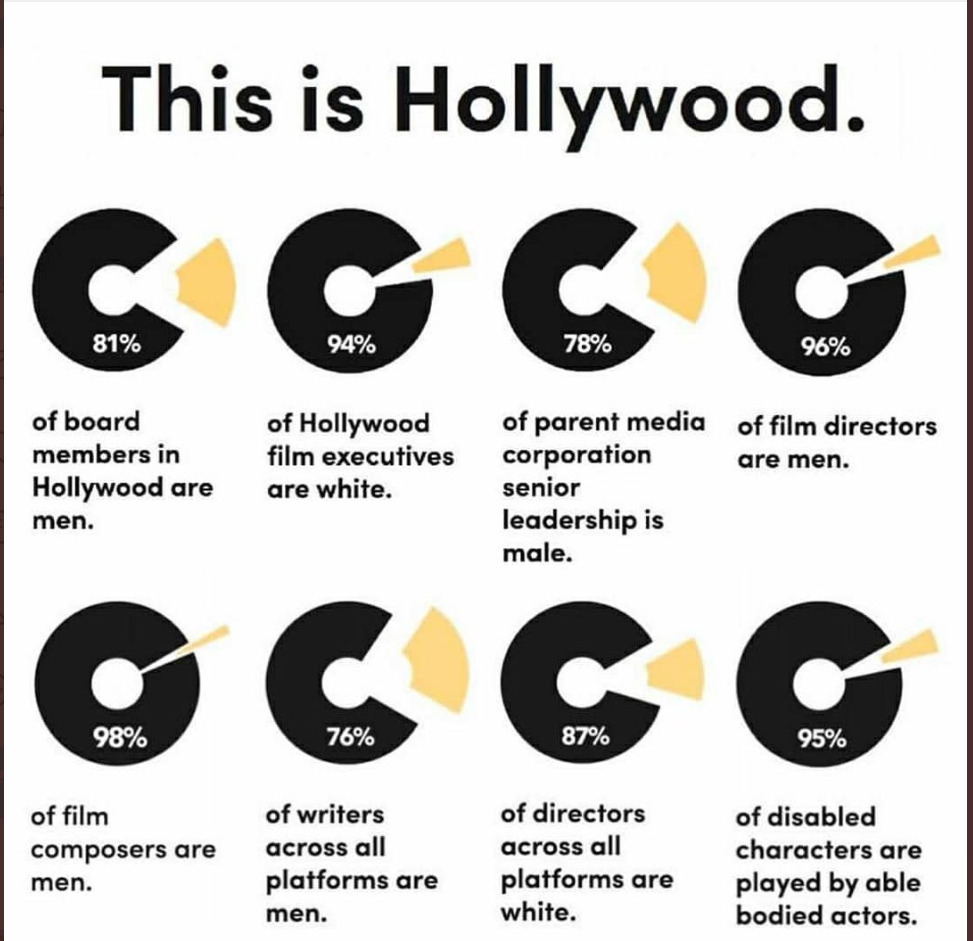
In recent years, all industries have seen a surge in the participation of minority populations across the world. This has led to a world-renowned discourse, hence coining the term, Tokenism. Tokenism is the act of involving minority societies worldwide, whether in the media or the workplace, to show inclusiveness to avoid criticism from social media and any accusations of discrimination.
Brad J. Hall, an Assistant Professor from the University of New Mexico, stated that tokenism involves “giving a token or relatively unimportant but positive item while withholding more substantial or significant assistance or involvement. The giving of the token is argued to be proof that the person is not prejudiced and allows them to avoid engaging in more meaningful acts of equality”.
The surge of companies trying to hire employees from the lower sections of society has caught the eye of many people giving rise to conflicting opinions. Many believe this act might mutually benefit both parties, whereas some feel this creates a more significant divide and doesn’t solve the prevalent issues.
Many companies have recently been called out for indulging in such practices where they hire one employee as a token to avoid getting accused of their racist ways. This, in turn, overshadows companies who have taken genuine steps to diversify.
Tokenism throughout history
Tokenism began in the early 1950s in the United States. It was started to reduce racial segregation amongst the employees and make sure they weren’t underrepresented. It, further on, got included in media, in workplaces, and also in politics. All television shows featured a person of colour. All industries started hiring a tiny percentage of people belonging to minority groups, yet the difficulties never subsided; instead, it became more challenging for them to explain the injustices they faced for being hired as a token.
This racial divide became inherently evident in films. As said by Frances Gateward, assistant professor of media theory and criticism at Cal State Northridge, “For white people, this is not a problem because their roles are so varied and so numerous that audiences do not see them as representatives of the white community, but simply the individual characters.” Many 80s and 90s tv-series and movies were actively trying to diversify, but many ended up establishing a vicious cycle of tokenism.
Psychology of tokenism
Throughout the years, where diversifying industries became a trend, many psychological studies have been conducted to understand the success rates and the repercussions of having such a system in place. Today, tokenism is no longer just limited to colour but applicable to all underrepresented societies globally.
It was established through several studies that putting such a system in place will affect both the individual and the organisation. Tokenism heavily affects the person’s mental and physical health, as it pushes them into a stereotypical role where they might feel dehumanised. They might be expected to do better than the rest to deserve equal standings and might not be accepted by their peers due to such a toxic work environment.
Such stigmatisation will negatively affect the work outputs from all the employees as it will put forth a picture that the organisation isn’t recognising the abilities of an individual but only their position in society.
Tokenism in the workplace
Tokenism in the workplace refers to making a perfunctory or symbolic effort to be inclusive to minorities. This is done by recruiting people from underrepresented groups to portray racial or sexual equality within a workforce.
A Harvard Business School professor, Rosabeth Moss Kanter, asserted that a token employee refers to an employee who belongs to a minority group that constitutes less than 15% of the workplace’s total population.
Tokenism affects all minority groups and overemphasises representation at the expense of inclusion. When it comes to gender, nearly 20 per cent of all women reported being the only woman or one of the few women in work settings, according to McKinsey & Co.’s Women in the Workplace 2018 report.
Tokenism in the Media
In a media setting, tokenism can be any act of putting a minority into the mix to create some sort of publicly viewed diversity. For example, shows like The Bachelor have one or two people of colour in the lineup of potential love interests, who barely get any screen time and don’t even get close to winning. Shows such as ‘Grey’s Anatomy,’ ‘NCIS’ keep an all-white cast and ensure one black cast member to prevent backlash.
Writers also use token characters such as an ethnic-minority character who has no real narrative function in the plot. They are background characters and are, therefore, disposable. They are eliminated from the narrative early to enhance the drama, while the main characters are a part of the dominant majority and remain untouched.
Movies and books still have issues when it comes to proper LGBT representation. J.K Rowling claimed Dumbledore was gay after finishing the Harry Potter series. Her announcement after the books were finished and her refusal to include gay scenes in the sequel to Fantastic Beasts and Where to Find Them makes it seem as if Dumbledore being gay was an afterthought.
Video game director Taro Yoko’s most recent game NieR: Automata includes many gay characters. Each of these characters was written in a relevant way while not basing their entire personality because they are gay. This is a prime example of diversity done right.
It is crucial to prioritise minority representation in the media because they have had to deal with insecurities and alienation for too long due to not seeing themselves represented in the media they consume daily. There is a long way to go as the media tries to push for more diversity and inclusivity while also providing quality entertainment.
Effects of Tokenism
By definition, token employees in a workplace are known to be few; hence, their visibility among the staff is high. This heightened visibility can lead to performance pressures due to their work placed under heavy scrutiny. Moreover, they are stereotyped by the dominant group. They are likely to behave in stereotypical ways because they feel they need to act consistently with others’ assumptions regarding their demographic background.
Tokenism negatively affects mental health. Individuals may feel the extra pressure to represent the outnumbered group. They may also feel a sense of isolation, especially when their contribution may go unacknowledged or when they receive no support if any microaggressions happen. Token employees may feel physically included but continue to feel like an outsider.
In film and media, regardless of whether a token character is stereotypical or not, tokenism can create biased perceptions that may influence how people see a specific race, culture, gender, or ethnicity. Members of minority communities may feel alienated and exoticised due to a lack of representation in mainstream media.
How to prevent Tokenism
To prevent tokenism, diversity and inclusion need to be integrated. Managers and team leaders should create an environment where everyone feels connected and included. Organisations should hire individuals based on their capabilities and what they can bring to the table and not based on race, gender, ethnicity, or simply improving diversity statistics.
Organisations need to find a way to speak to their community made up of disparate people in a way that’s authentic to their business, rather than just creating ‘diversity ads’ or running one-off workshops for a small group of people.
Writers, showrunners, and filmmakers need to write culturally diverse characters, not for the sake of pandering to a particular community. Instead, these characters should be written because they are poignant to the plot and have a role beyond cultural stereotypes.
Diversity and inclusion take time and effort and can only occur through active and informed institutional change to create a more inclusive environment for people of all races, genders, ethnicities, and so on. True representation can only occur through successful inclusion.
Written by Abha Deo and Anwesha Bhattacharjee for MTTN
Images by fastcompany.com, fnlondon.com, imaginethisprods.com
Featured Image by thesmokesignal.org



Leave a Reply
You must be logged in to post a comment.